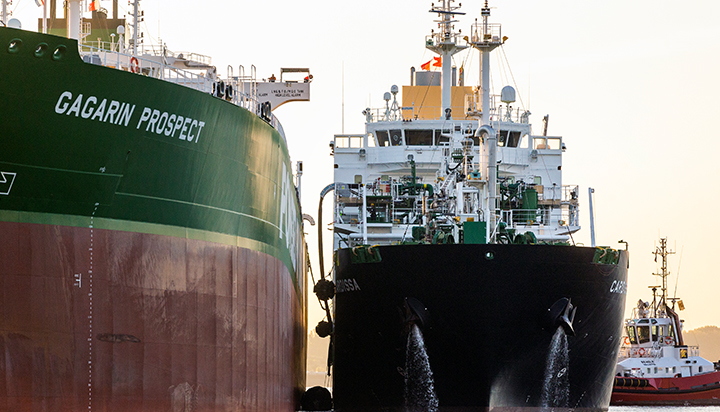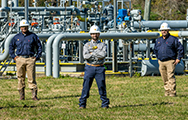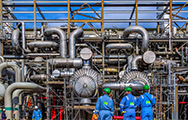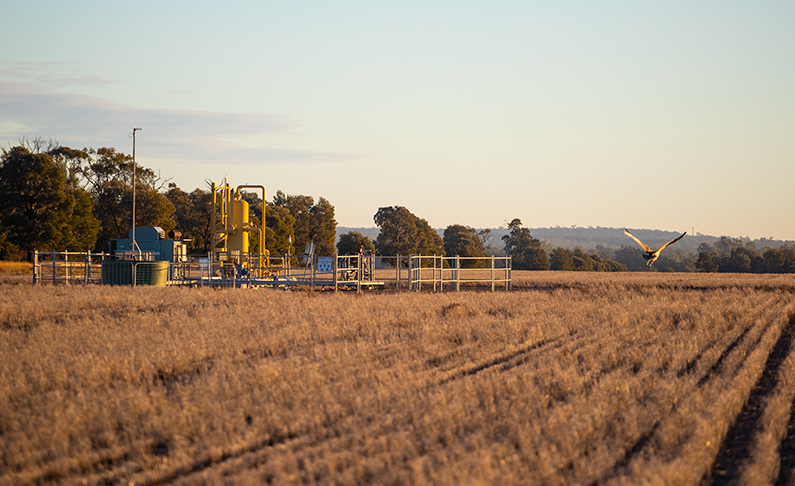Air emissions
Air quality
Transport is essential to modern living. It drives economic growth, allowing countries to trade goods and communities to connect with one another. But transport accounts for around 25% of the world’s carbon dioxide (CO2) emissions and contributes to poor air quality.
Reduced travel due to the COVID-19 pandemic in 2020 highlighted the impact that traffic has on local air quality. Looking ahead, society needs to ensure people and goods can continue to move freely but in ever cleaner, more efficient and sustainable ways.
Shell continues to look for solutions to help improve air quality, including through the development of cleaner fuels. We are also investing in a range of cleaner alternatives in markets where we see strong potential for growth.
Cleaner transport options
We are developing a range of lower-emission choices for customers – from electric-vehicle charging points to hydrogen and advanced biofuels – to help people and companies use cleaner modes of transport.
We operate more than 60,000 electric-vehicle charge points and aim to increase this to around 500,000 by 2025. This includes over 1,000 charge points at Shell forecourts and new locations as well as operated charge points owned by our individual and business customers.
We are growing our global network of hydrogen refuelling stations for cars and trucks. When driven, hydrogen vehicles do not emit carbon dioxide, only water vapour. If the hydrogen is produced using renewable energy, the fuel is virtually emission-free. We are also investing in technologies that use renewable energy to produce green hydrogen at scale for industrial users in Europe (see Hydrogen).
For heavy-duty road transport, we make fuels from liquefied natural gas (LNG) and gas-to-liquids products that reduce sulphur emissions, particulates and nitrogen oxide.
Learn more about cleaner transport at www.shell.com/future-transport
Cleaner air at sea
We are increasing the availability of LNG for marine customers, which burns more cleanly compared with heavy fuel oil or marine diesel. To deliver LNG to customers in the busy seas of North-west Europe, Shell has three LNG bunker vessels to refuel ships. Our fleet includes the Cardissa, which can do this at sea or in port.

Cardissa supplies marine customers in Europe with LNG fuel, which can reduce sulphur and nitrogen oxide emissions compared with traditional marine fuels.
In our operations, we are investing in our long-term charter fleet with 18 new LNG carriers that can run on LNG or conventional liquid marine fuel giving them the best emissions performance in their class.
In upstream drilling, we aim to use equipment, such as natural-gas-powered engines, that can reduce our emissions of nitrogen oxide, sulphur oxides and other greenhouse gases.
Improving road paving
We have developed bitumen that reduces emissions of specific gases and particulates that impact local air quality when asphalt is made, or a road surface laid.
In trials, the new formulation reduced emissions of nitrogen oxide, sulphur dioxide, volatile organic compounds, particulate matter at 2.5 and 10 microns, and carbon monoxide by an average of 40% compared with conventional bitumen. Shell Bitumen FreshAir is now used in countries worldwide, including China, France, the Netherlands, Thailand and the UK.
Managing emissions from our operations
Our refineries and chemical plants operate air quality monitoring networks that continually measure emissions from our facilities. These data are made available as required to regulators.
Managing our non-GHG emissions
We take steps to reduce airborne pollutants in our oil and gas production and processing, for example, lowering emissions of nitrogen oxides, sulphur oxides and volatile organic compounds.
Sulphur oxide, nitrogen oxide and volatile organic compound emissions performance
Our sulphur oxide emissions in 2020 decreased to 36 thousand tonnes compared with 65 thousand tonnes in 2019. This was mainly because of divestments in Canada and the USA, reduced emissions from our Pulau Bukom refinery in Singapore and a smaller shipping fleet coupled with the use of lower-sulphur fuels.
Our nitrogen oxide emissions increased from 108 thousand tonnes in 2019 to 118 thousand tonnes in 2020, in part due to the inclusion of emissions from contractor transport in our numbers.
Our emissions of volatile organic compounds (VOCs) decreased to 47 thousand tonnes in 2020 from 55 thousand tonnes in 2019, in part due to a decrease in flaring at Prelude (Australia).
Read about Shell’s Greenhouse gas emissions.




